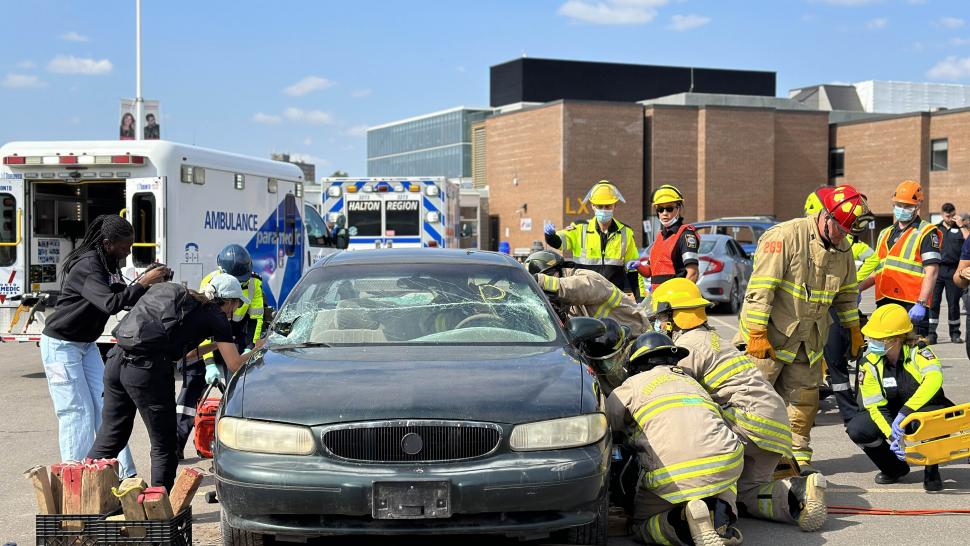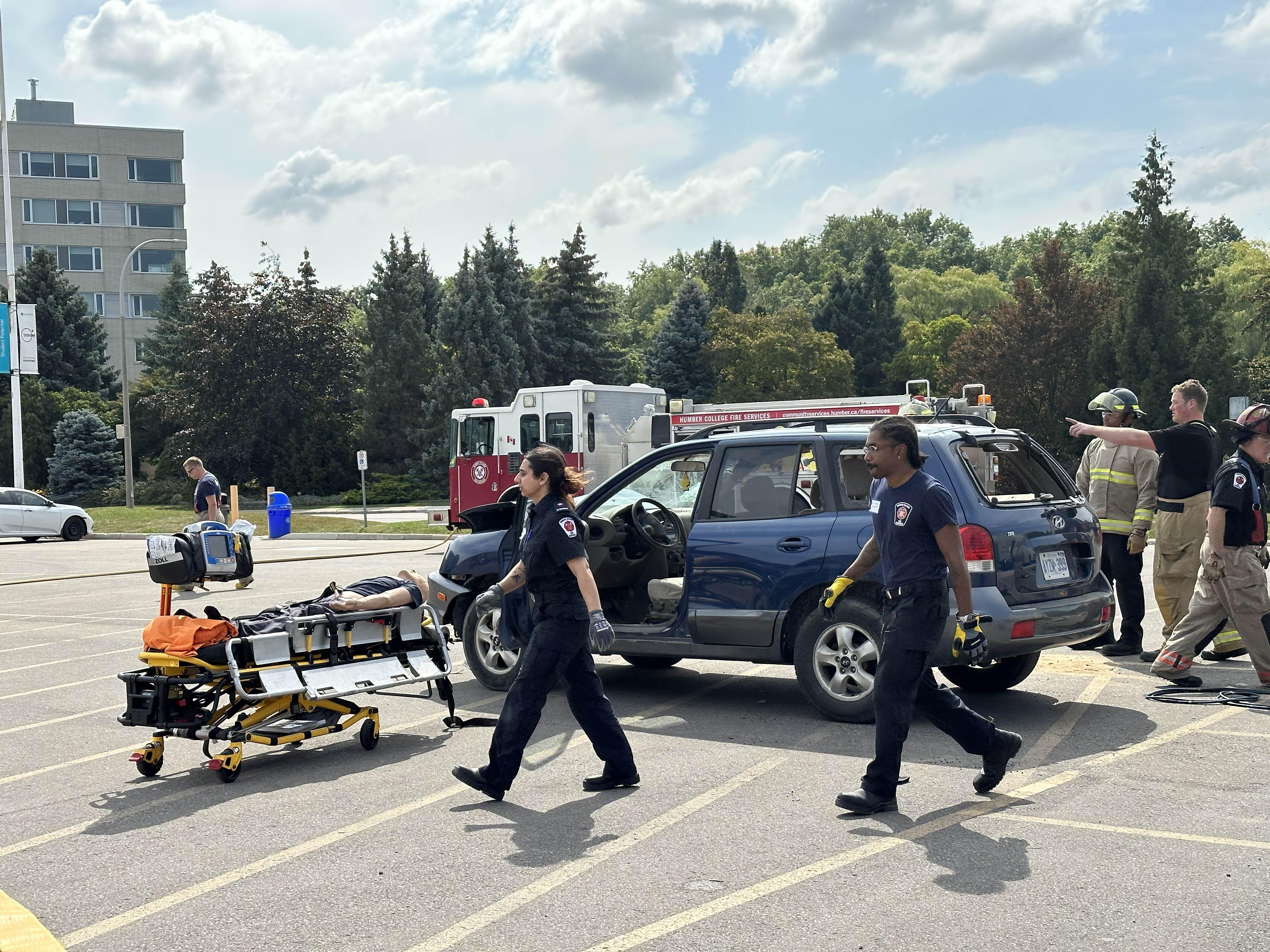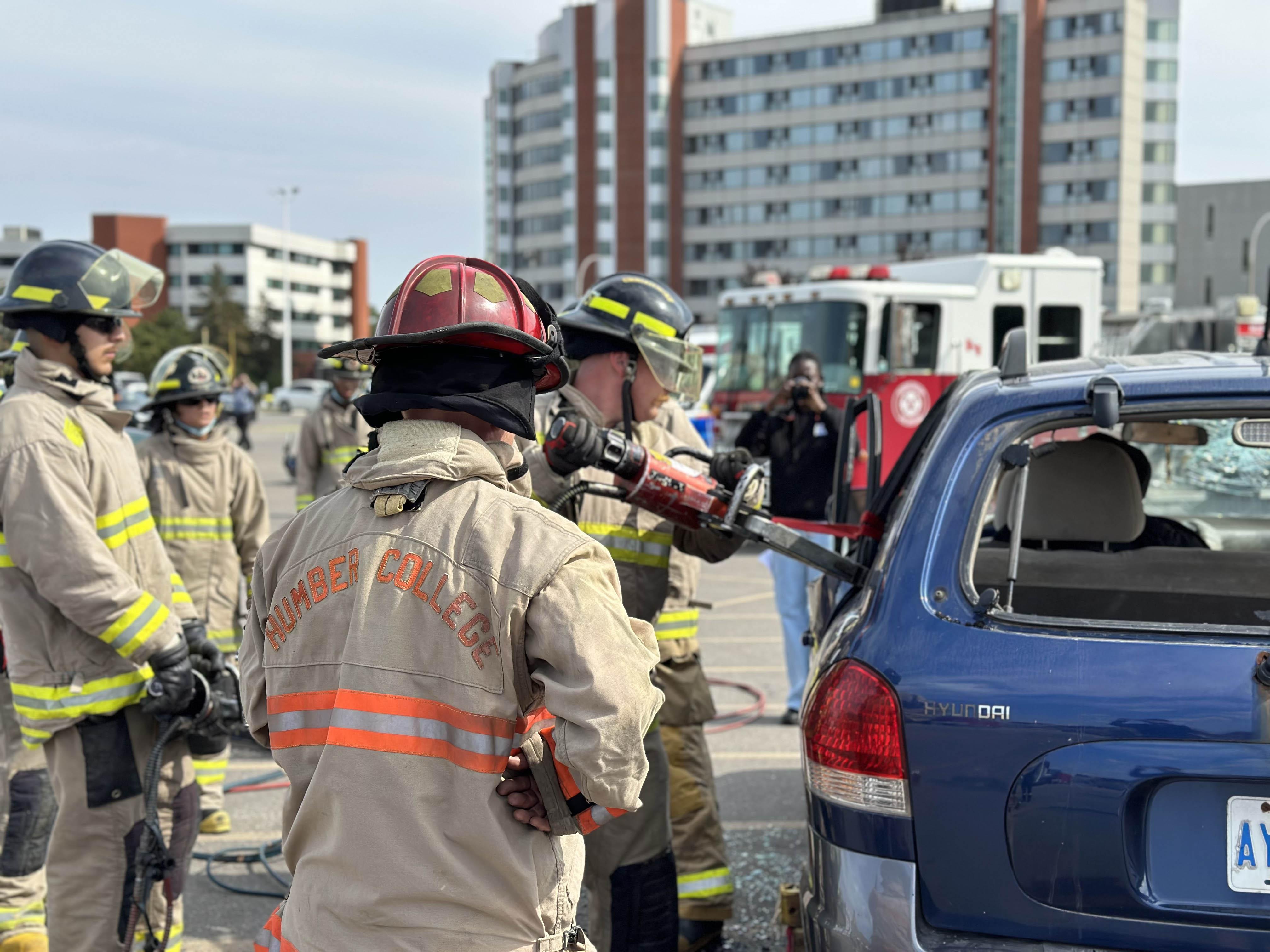
Humber College students took the learning from the classroom and put it into practice at the annual Rescue Weekend where learners from several programs responded to a simulated vehicle mass casualty incident.
Making the experience unique is the collaboration involving four programs – Paramedic, Pre-Service Firefighter Education and Training, Emergency Telecommunications and Exercise Science and Lifestyle Management. During the simulation, the students learn from their own individual experiences while also benefiting from the insights of their peers in other programs within a real-world context.
Craig MacCalman, program coordinator with Humber’s Paramedic program, said the event is an excellent opportunity for the learners to experience what a call such as the simulated one would be like in person. Having the students work with their colleagues from other programs is an invaluable experience, said MacCalman.
“Most of these professions train in their own individual simulation and skills labs for this type of event but they never get to work together until it actually happens,” said MacCalman. “This simulation allows the teams of students to practice together before they encounter the real thing in the real world.”

MacCalman added that they increase the realism of the simulation each year as they know that students can best apply learning in these environments when there are no breaks to the real-world feel of the event.
As part of the simulation, the Emergency Telecommunications students dispatched emergency crews to the simulated accident where a mix of actors and dummies posed as patients in distress. The Pre-Service Firefighter and Paramedic students worked together to assess the scene and provide care to the simulated patients. The Paramedic students then transferred them to a simulated emergency room.
The Exercise Science and Lifestyle Management students watched to evaluate their peers on the ergonomic safety of how they are performing life-saving measures.
New to this year’s event was the ‘Jaws of Life’ hydraulic rescue tool that was used by students to extricate “injured” patients from their vehicles. It added to the authenticity of the event recreating what emergency responders experience while out in the field.

Paramedic student Rupreet Kaur was glad for the opportunity to participate in Rescue Weekend and left feeling more confident in her skills.
“The experience was really beneficial,” said Kaur. “I think it’s important to have a situation where you’re able to practice what you have learned in class out in the field.”
Kaur added it was also very insightful to see how her fellow students from other programs approached the mock scene and what their responsibilities were. It gave Kaur a better understanding of the scope of their duties and how they can collaborate with paramedics such as herself, which will help in her professional career when she arrives at a scene.